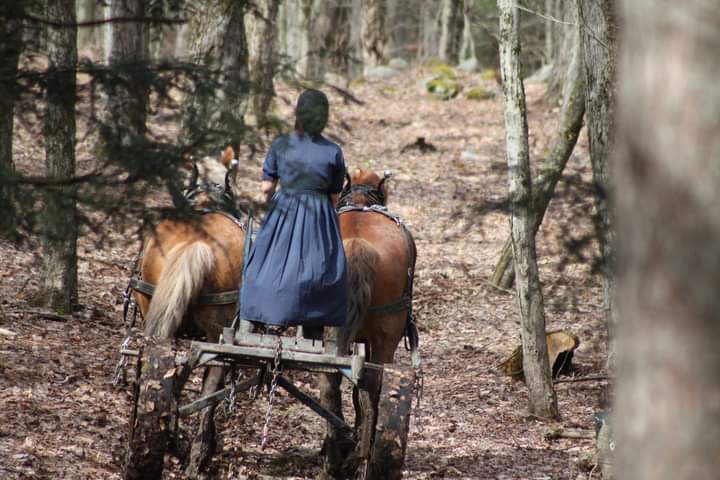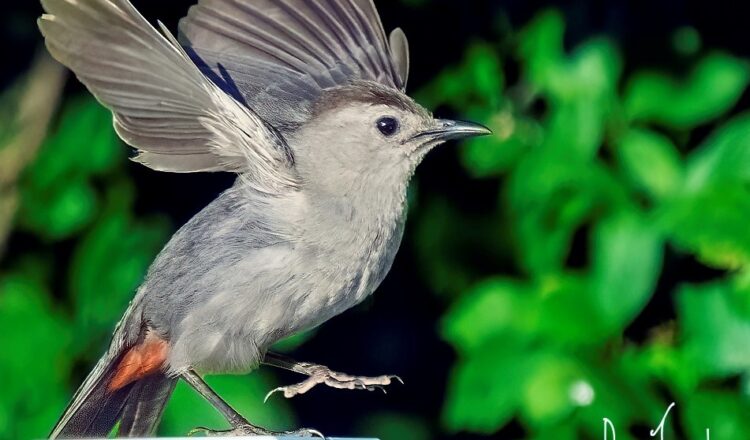By Dan Jordan, Jordan Photography and Consulting
As spring approaches, I decided to make one of my favorite migrating birds my feature this week. Not a household name, the grey catbird is probably more commonly seen than people might think. Catbirds don’t sport flashy color schemes like northern cardinals, blue jays, and eastern bluebirds, so they don’t “stand out”. That said, after closer inspection, they are beautiful little birds, and can be VERY entertaining.
As can be seen in the header photo, catbirds are mostly grey with black caps and red patches under their tails. These red patches aren’t visible all the time, only when posed just so or when taking flight. I’ve had lots of people tell me, when looking at my photos, that they never realized that catbirds had any red on them.
From personal experience, I can tell you that catbirds are very people-friendly. Two years ago, we had a catbird which visited us on our front porch every day. It would perch in a red bud tree about 15 feet from our spots on the porch and entertain us. Every day. One day, we had visitors stop by in their golf cart. As we stood in the roadway chatting with them, our little friend landed on their windshield and listened in. It was less than six feet from us and less than two feet from our friends who were still seated in the cart.
In 2022, I would fill our bird feeders every morning, very early. Each day, a catbird would join me, sitting just above me in the very tree I hang the feeders from, and sing and sing, and sing. Catbirds don’t eat from the feeders, but there he was, every day in ritualistic behavior (as was my ritual of filling the feeders at first light).
So, we have developed a bond with the catbirds at our place and hate to see them go, as winter approaches.
Here are some interesting facts about grey catbirds that you may not know.
- Catbirds get their name from a vocalization which sounds very much like a cat meowing. Once you get to know this sound, you may be amazed by how many catbirds are about.
- My catbird friend which joined me every morning last year for the filling the feeder ritual, would meow at me as I crossed the street, then move on to other catbird songs once I arrived at “his tree”.
- Below is a link to a short video which features the catbird “meow”.
- Here’s another link featuring another catbird vocalization.
- Catbirds have the ability to make two sounds at once, due to a complicated biological trait. And, they do!
- Catbirds are in the same family as mockingbirds and thrashers. I mentioned in an earlier article featuring brown thrashers, that we often see a catbird when we see a thrasher. They seem to “hang out” and feed together. We don’t see brown thrashers that often but more than likely, when we do, a catbird or two will be nearby.
- Catbirds migrate to Mexico and central America in the winter to escape the harsh weather. Oddly enough, sometimes the north American catbird can be found in Western Europe during its migration.
- I have to admit that this seems odd and very unlikely. I will do further research on this point to try to understand it.
- Being from the same bird family as mockingbirds, catbirds similarly can mimic other birds’ songs. They are even known to mimic tree frog vocalizations. There have even been cases of catbirds mimicking manmade or mechanical sounds.
- The people at the Audubon Society describe the catbird’s vocal prowess thusly:
- Catbirds exhibit impressive vocal prowess, with males able to rattle off an array of phrases featuring chirps, squeaks, whistles, whines, and even gurgles.
- This makes me wonder if at some point in their evolution, if they mimicked a cat’s meow and it “stuck”.
- The people at the Audubon Society describe the catbird’s vocal prowess thusly:
- Catbirds feed on insects, either on the ground or in the tops of trees. They also consume fruit and berries, which can make up close to half their diets when these food stuffs are available to them.
- We feed our Baltimore orioles blueberries along with grape jelly. We often see catbirds taking the berries from the oriole feeder as is shown in the next photo.
- Actually, the pictured catbird is making off with a blueberry and some grape jelly!
- Sometimes, there will be a catbird on the oriole feeder at the same time as one or more orioles. We think of catbirds as being small songbirds, but they are much larger than the diminutive Baltimore orioles, much larger!
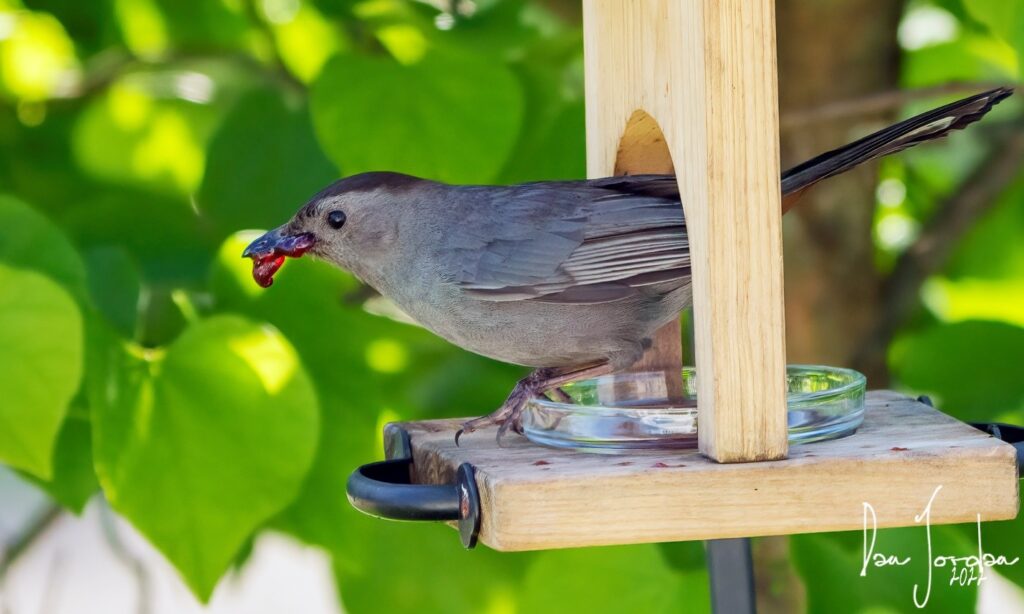
- Scientists have banded catbirds to study their habits and have found that very often, they return to the same nesting grounds year after year. This leads me to hope that my morning companion will return this spring to join me for our morning ritual.
- Catbirds can live long lives. The longest on record was a catbird which returned to the same location in New Jersey for 17 years. In the bird world, that’s a very long life.
- One last fact. Brown-headed cowbirds are notorious for laying eggs in another species’ nests. Most bird species raise the cowbird chicks at the peril of their own hatchlings. It has been shown that female catbirds recognize this and destroy the foreign eggs before they hatch. This is a unique trait which helps the catbird species thrive.
So, now that we have the science and learning out of the way, let’s dive into some photos. There are none from 2023 yet, as the catbirds have not returned from their trips south.
The first photo shows the catbird which joined us every day while we sat on the front porch. It perched in the redbud tree and serenaded us almost every time we sat there.
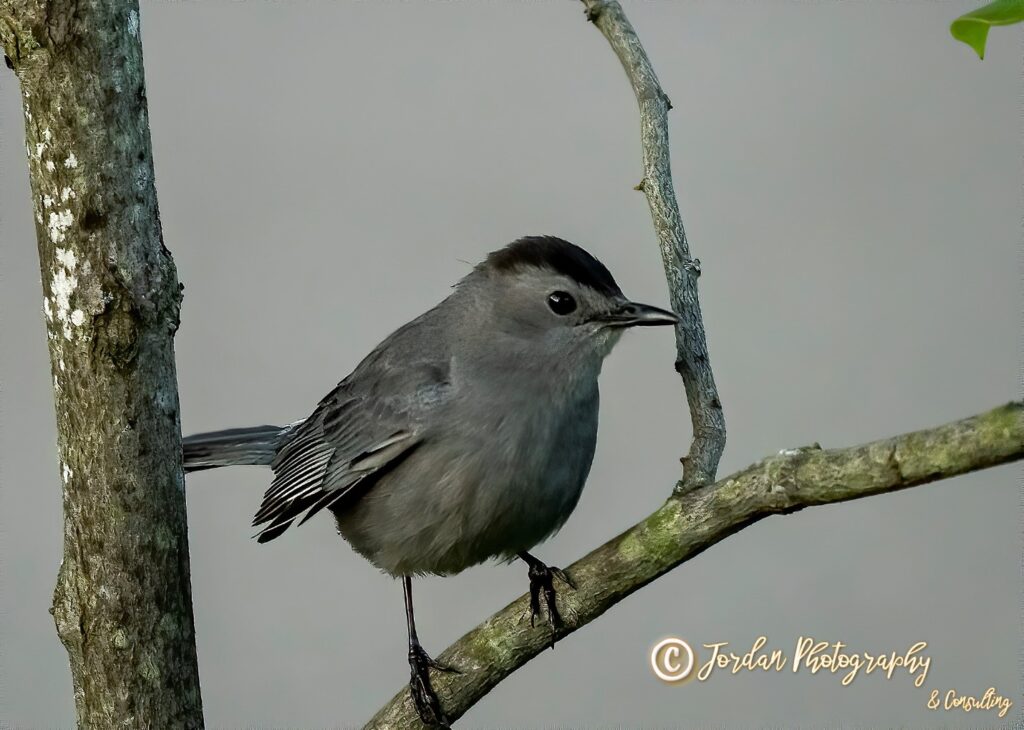
The next shows one of our catbirds stuffing its beak with berries near our feeder.
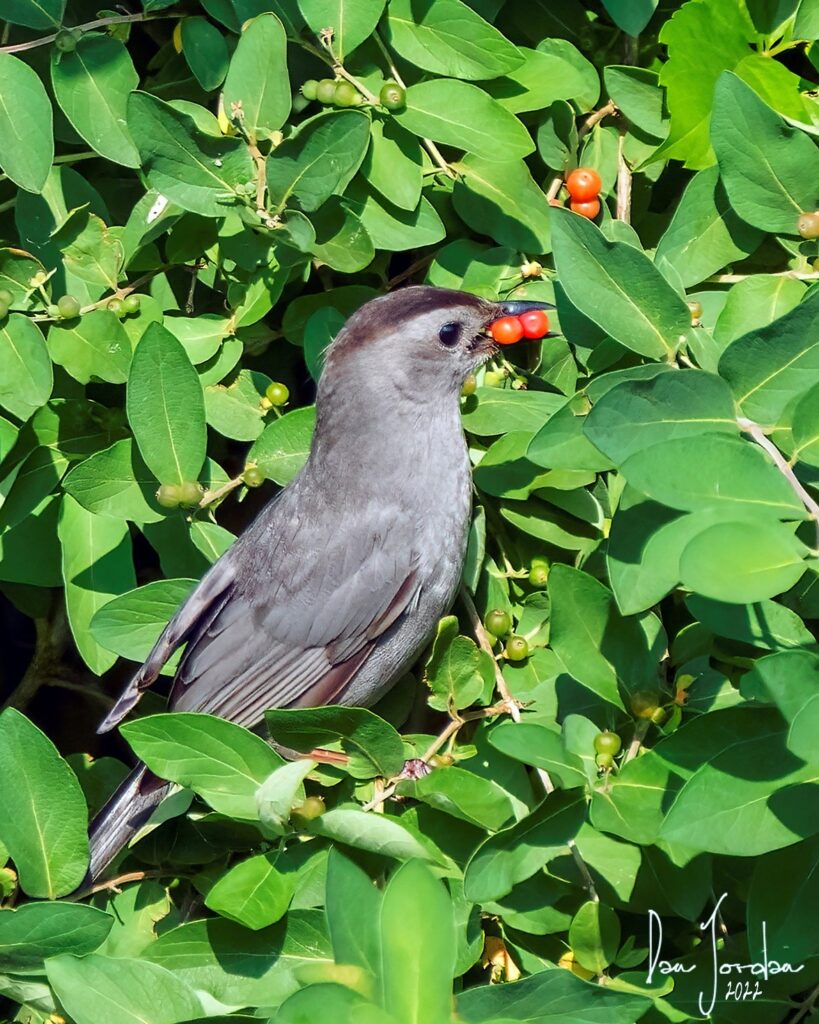
The next is a rare photo (for me) of a juvenile grey catbird, waiting for a parent to share a berry.
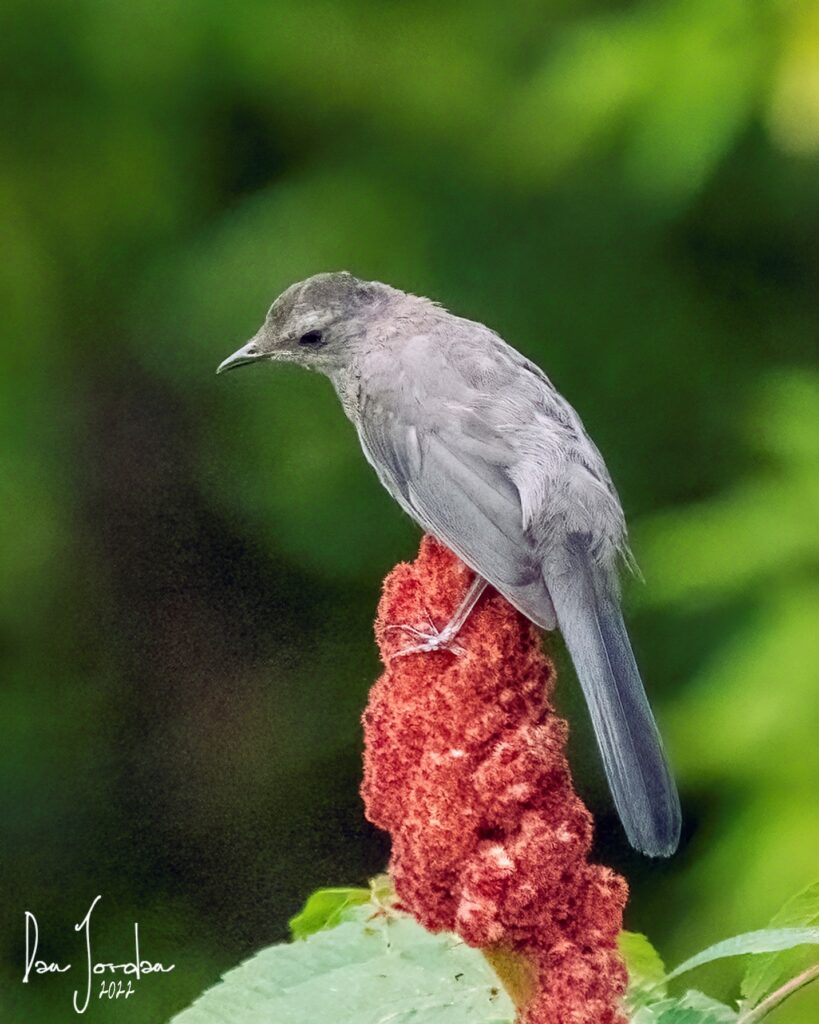
And the last several photos are of various catbirds doing various catbird things in our lawn over the last two years. It’s easy to see why we have become so enamored with these little songbirds!
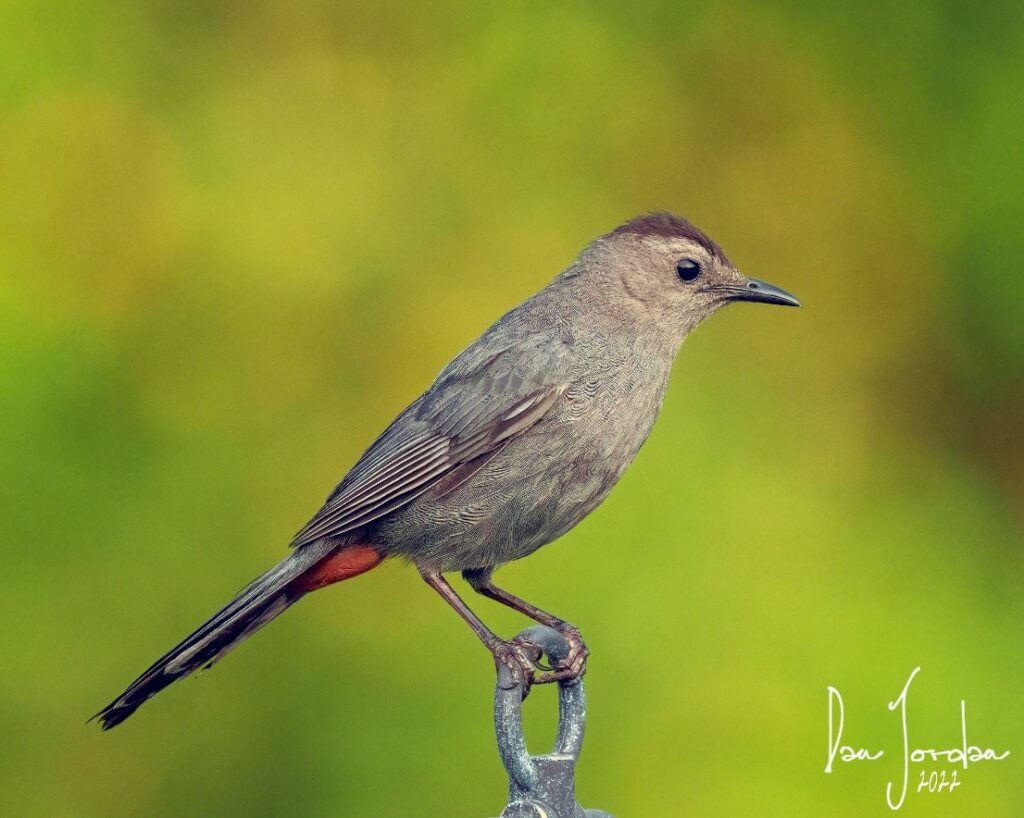
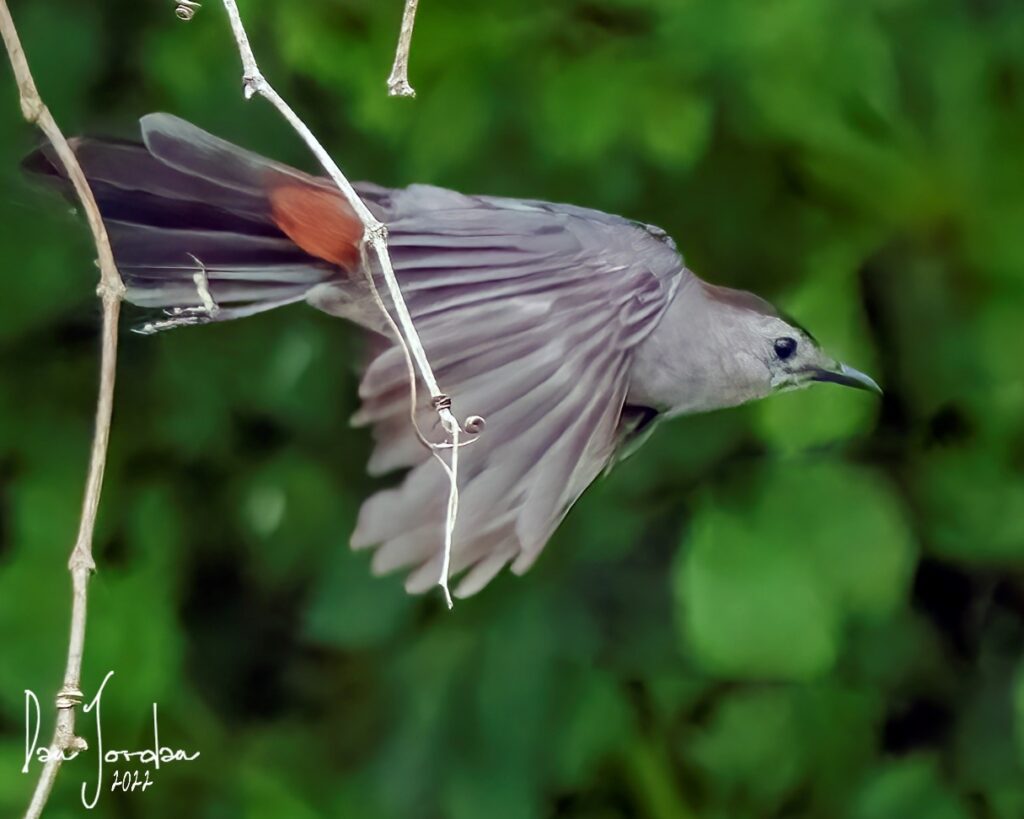
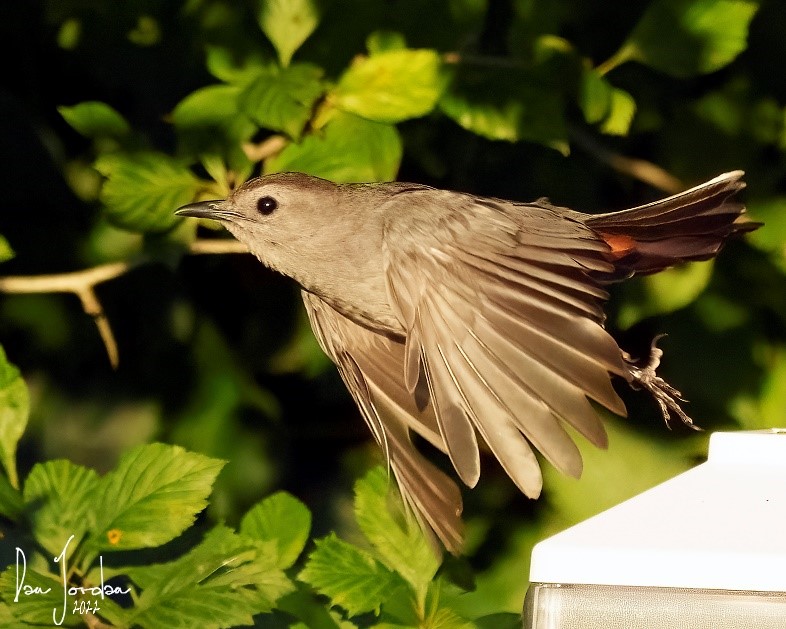
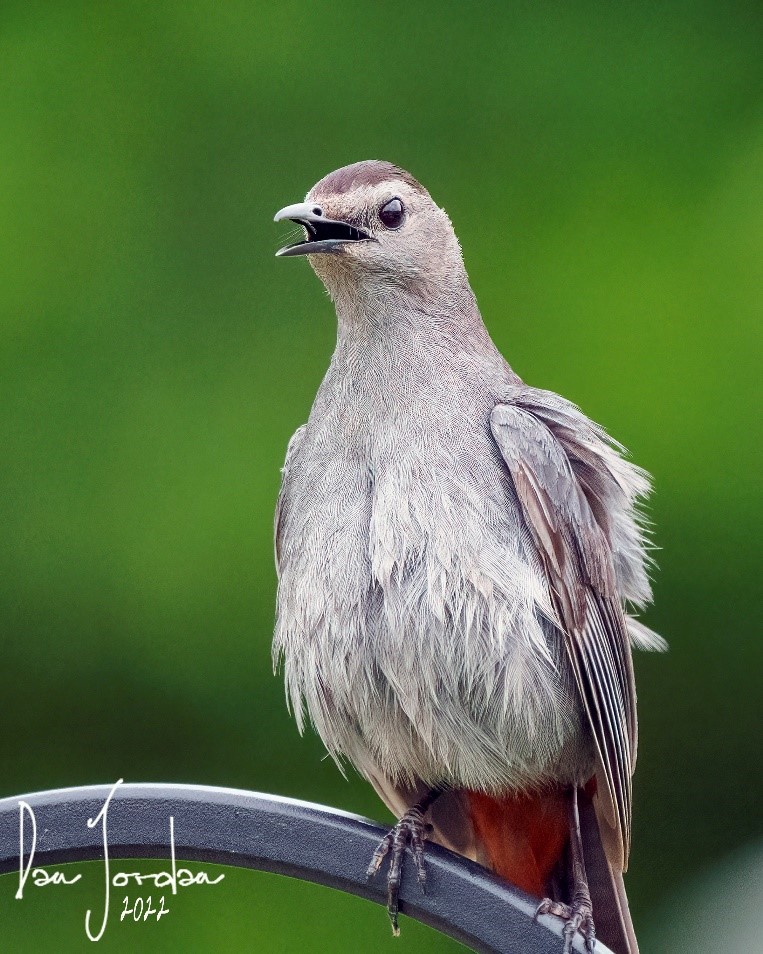
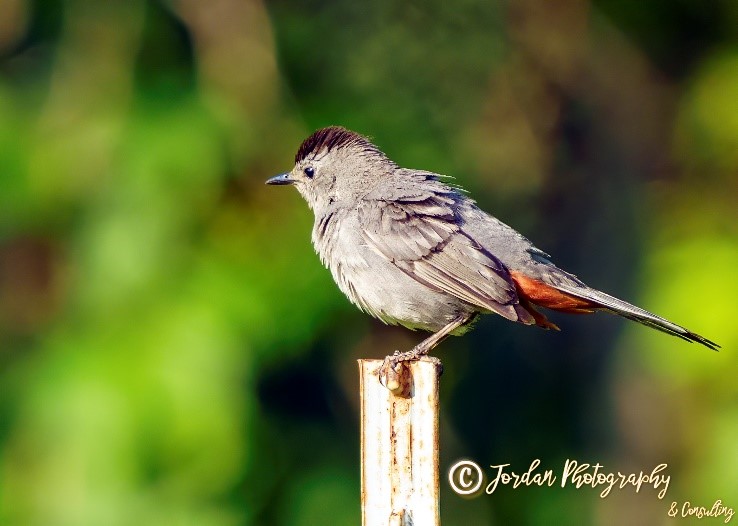
And lastly, this little show off!
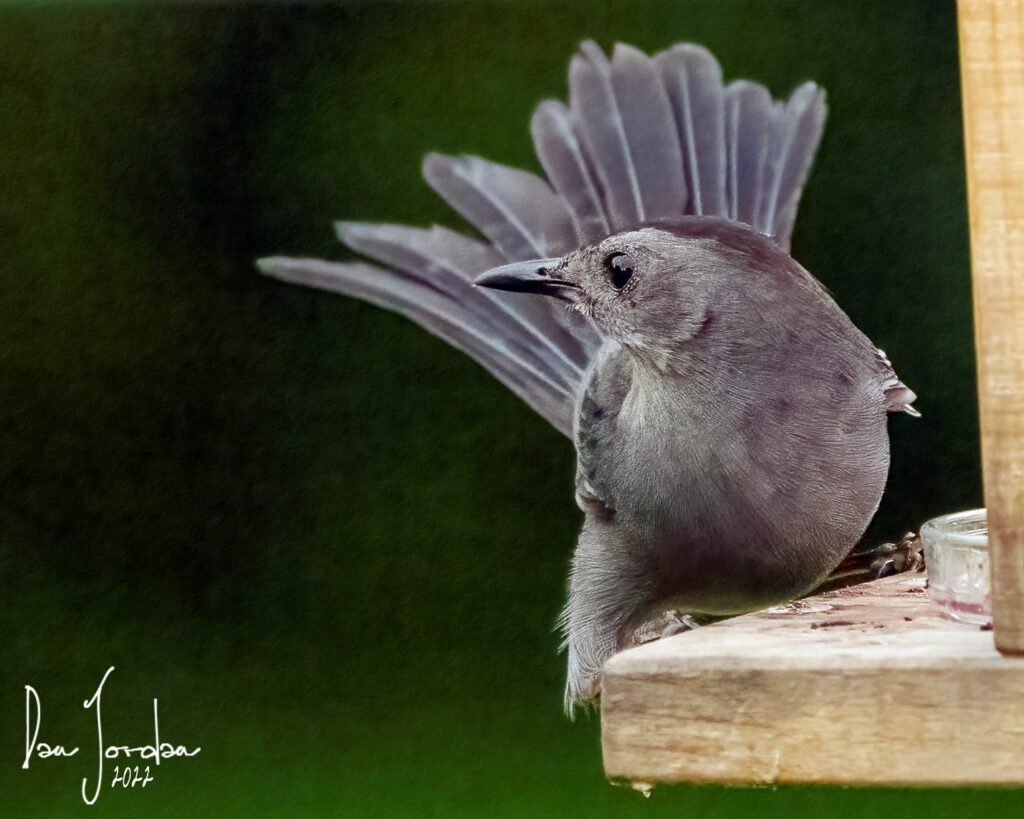
So, when you’re out for a leisurely stroll and you think you hear a random cat meowing, look to the trees before looking down for the source of the meow. You might find yourself face-to-face with one of these friendly little songbirds!
MEOW!

